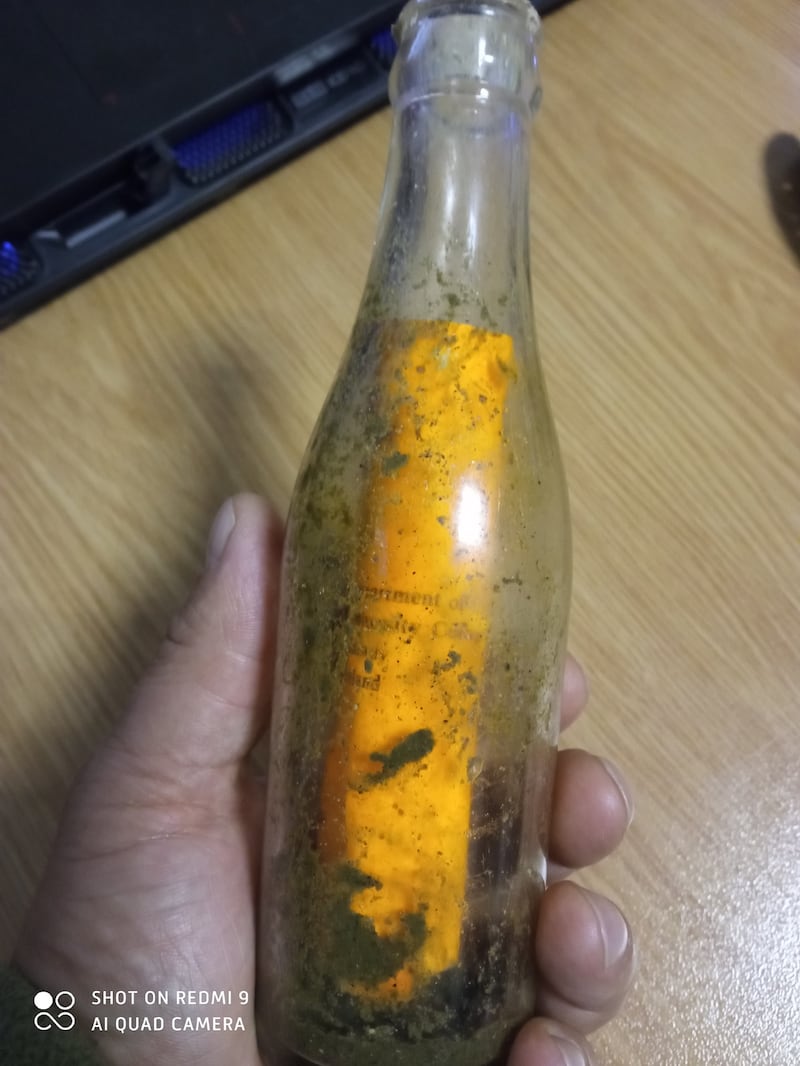A message in a bottle believed to have been thrown into the Atlantic off the Irish coast up to 40 years ago has been found about 4,000km away in the Russian port of Murmansk.
Academics at NUI Galway have been left puzzled by the discovery of the bottle – known as a drifter – which was used as part of a research programme by oceanographers to study drifts and tides around the island.
There are two theories as to its epic journey. Firstly, that it was simply carried by the natural currents over the North Sea, through the Norwegian Sea and into the Barents Sea, or, secondly, it was picked up by a fishing boat and dumped in the port, located about 700km east of the Finnish border.

Dr Martin White, an oceanographer at NUIG Galway, said he believes it got there by itself.
“It is amazing to think it has gotten that far. I fully believe it made its way there by itself,” he told The Irish Times.
“It can certainly reach there by the currents. It is likely 30 or 40 years since it was deployed. I think it is quite amazing, if it did go with the currents, that it survived intact, without leaking in the intervening years.”
Drift patterns
Dr White says a predecessor at the university, Prof Ed Monahan, who used the drifter bottles extensively in the 1970s and 1980s, likely deployed it off the west or northwest of Ireland at the time.
The practice was common before the advent of satellite technology which makes it much easier to track currents, tides and drift patterns.
In recent weeks, a man sent an email to NUI Galway having fished the bottle out of sediment in Kola Bay, a 57km-long fjord next to Murmansk, in the most northwesterly reaches of Russia.
The finder also emailed a number of photos of the bottle, as well as the card, not much bigger than an old-style postcard.
Addressed to the long-since defunct Department of Oceanography at University College Galway, which was renamed in 1997, the card asks the finder to fill out their name, address as well as where and when it was found.
It is discoloured and stained in parts and it is unclear from the photos if a serial number on it has survived. The number would allow the university to match against its own records, which could tell them exactly when and where it was propelled into the sea off Ireland.
Among the mysteries surrounding the bottle’s journey, Dr White said it isn’t known whether it took up to 40 years to reach Murmansk, or whether it made it there within a number of years and has been lodged in the bay since.
Translate letter
“It could have been laying at the bottom of the bay for a decade or two,” he said.
“But the card inside is not completely destroyed. It is a drifting bottle, so it would be near the surface, and therefore likely to take a more circuitous route than the main ocean currents, which are more persistent and direct in their travel.
“On the surface, it would have been at the behest of the winds and prevailing weather conditions, so it could have been moved around. The chances are it has taken some time to get there.”
Dr White’s Russian-speaking wife, Tatiana Popova, is to translate a letter for him in an attempt to glean more details from the finder.
Dr Tiernan Henry, head of earth and ocean sciences at NUIG, said “it wouldn’t be a surprise every so often to get an email or a letter with one of the cards, saying this was found in some beach on Wales, or wherever, if it was thrown into the Irish Sea”.
“But this would have had to have gotten up past Shetland, the Hebrides, up the entire length of Norway and round the top [of Scandinavia]. It is unusual.”
Dr Henry added there had been a “great” reaction to the discovery from colleagues in the department who are determined to shed light on the bottle’s journey.









